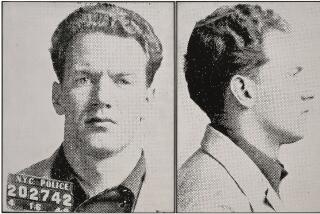Mugs and Jugs
- Share via
In this sporadically tasteful age, illustrated drinking vessels suggest nonserious dining--fast-food soft drinks, perhaps, or cajoling small children to drink their milk. But in the 18th century, when glass was still expensive and people mostly drank out of pottery or even wood, there was a regular fad for them.
When a comedian mugs or the police refer to a mug shot, they’re recalling this 18th-century habit of putting faces on mugs. The most familiar kind is the “Toby mug,” featuring the face of a portly gent in a three-cornered hat. Mugs so often had grotesque faces on them that “mug” became a wisecracking slang term for the face.
In fact, “mug” (or “muggins”) came to mean a face with nothing behind it--a total fool. That’s probably where the verb “to mug” came from. Only a sucker from out of town would walk around where he could get jumped and robbed.
Jugs could have mugs plastered on them too. In fact, “jug” is a personal name--an old nickname for Joan or Judith--though not a very sweet-sounding one. But probably the name is merely fanciful, like the names people sometimes give various other useful implements; one thinks of the word “john.”
The same is probably true of the demijohn (in French, Dame Jeanne), a large bottle, usually enclosed in wicker, with a narrow neck. One hopes that neither “jug” nor “demijohn” implied any opinion on what the Joans and Jeannes of the world look like.
More to Read
Eat your way across L.A.
Get our weekly Tasting Notes newsletter for reviews, news and more.
You may occasionally receive promotional content from the Los Angeles Times.









